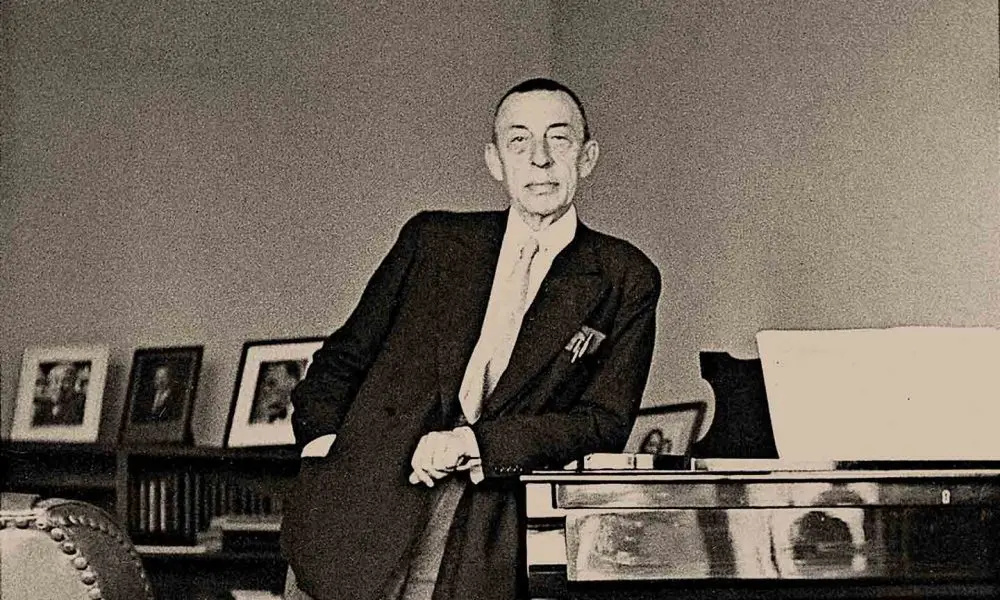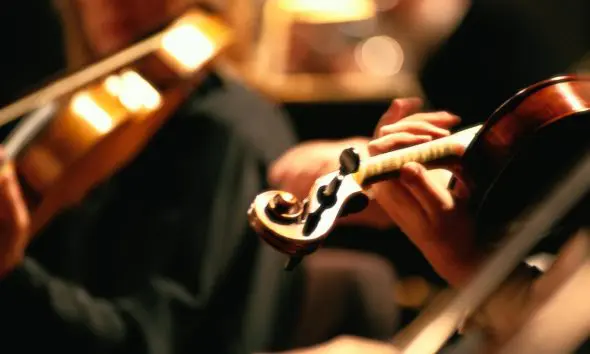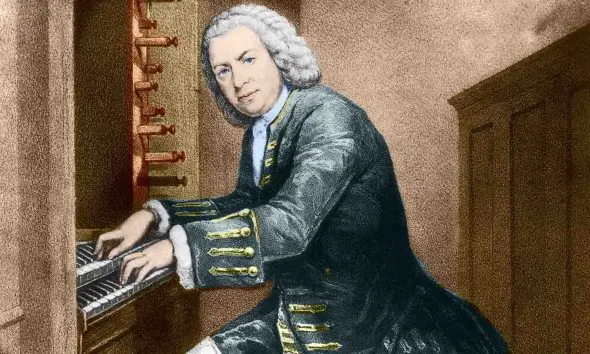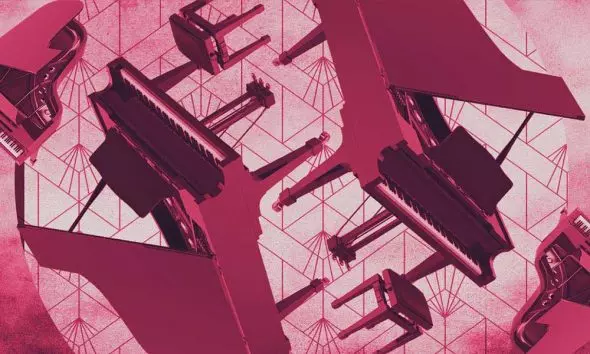Best Rachmaninov Works: 10 Essential Pieces By The Great Composer
Sergei Rachmaninov was a legendary Russian composer and pianist – discover the best Rachmaninov works including ‘Piano Concerto No. 2’.

Sergei Rachmaninov was a legendary romantic Russian composer, pianist, and conductor. His music is characterized by sweeping melodies, virtuosic pianism, and heady orchestration. His Moscow training equipped him first and foremost to be a concert pianist but as a young composer he showed prodigious gifts, stunning his mentor Tchaikovsky with the C Sharp Minor Prelude and the one-act opera, Aleko, he composed while still in his teens. Most of his pieces are in a late Romantic style akin to Tchaikovsky, although strong influences of Chopin and Liszt are apparent. His compositions include, among others, four piano concerti, three symphonies, two piano sonatas, three operas, a choral symphony, a setting of the Vespers, Rhapsody on a Theme of Paganini, 41 Preludes and Etudes, Symphonic Dances, and many songs. Rachmaninov’s Piano Concerto No. 2 is one of the greatest works in the piano repertoire.
Listen to the best of Rachmaninov on Apple Music and Spotify.
Piano Concerto No.2 in C minor, Op.18
Following the disastrous premiere of his First Symphony Rachmaninov composed almost nothing for around three years. He sought help from a hypnotherapist and his comeback piece, the Piano Concerto No 2, dedicated to his hypnotherapist, is one of the greatest works in the piano repertoire. The concerto opens with a steadily intensifying series of piano chords, before the violins and violas embark on the first of several beautiful, slowly unfolding melodies.
In the mostly serene slow movement (famously used in the film Brief Encounter), melodic duties are shared between the pianist and the woodwind soloists. The finale begins with some virtuoso fireworks, although Rachmaninov soon makes time for another celebrated big tune. This melody even made it into the charts, in the form of the song Full Moon and Empty Arms, recorded by artists including Frank Sinatra, Sarah Vaughan, and Bob Dylan.
Sonata for Cello and Piano in G minor, Op.19
After the success of his Op.18 Rachmaninov threw himself into his work. This fine cello sonata appeared not long after the Second Piano Concerto’s confidence-restoring premiere, its magical ‘Andante’ at times reminiscent of the earlier work’s ‘Adagio’. In the sonata, however, the music feels less at ease, more delicately poised between hope and despair.
Rachmaninov composed the cello part for his friend (and best man) Anatoly Brandukov. The cello writing is passionately melodic almost throughout: the sonata’s long first movement is a gift for any cellist who can really sing. The piano part, though, is fiendish. Any cellist thinking of taking up the work needs to find a very gifted accompanist.
10 Preludes, Op.23
Rachmaninov composed 24 piano preludes: one in each major and minor key. The famous C sharp minor Prelude came first, in 1892; the complete Op.23 set followed 11 years later, and the final 13 preludes arrived in 1910.
The set of ten Op.23 preludes range widely in mood. Alongside the mysterious opener and the yearning No.4 (with shades of Chopin) are the barnstorming No.2 and the seriously testing No.7, which demands the niftiest of fingerwork.
After the obsessive whirling of No.9, the tenth and final prelude of the set brings things to a peaceful close. By far the best-known is No.5, a popular encore. The outer sections of this prelude are dominated by the snappy march rhythms heard right at the beginning. The contrasting middle section again harks back to the big tunes of the Piano Concerto No 2.
Symphony No.2 in E minor, Op.27
The premiere of Rachmaninov’s Second Symphony took place in St Petersburg, the scene of the First Symphony fiasco. But this time, with Rachmaninov on the podium (rather than a probably drunk Glazunov), things went to plan and the symphony, one of Rachmaninov’s best works, went on to become an audience favourite.
Highlights include the athletic ‘Scherzo’, with its dazzling central fugato in which the strings frantically chase each others’ tails. The slow movement is also a gem, featuring one of the greatest (and longest) clarinet solos in the orchestral repertoire. The finale quickly establishes a carnival atmosphere – although, as always, Rachmaninov is more than happy to slow things down for another lyrical theme or two.
The Isle Of The Dead, Op.29
The Isle Of The Dead was inspired by an Arnold Böcklin painting in which Charon, the ferryman of the dead in Greek mythology, is seen rowing a coffin across to a spooky island. Rachmaninov’s symphonic poem opens with a repeated five-in-a-bar figure, perhaps representing Charon’s oars pulling through the water.
Over the top we hear fragments of the Dies Irae plainchant. This ominous theme, which translates as ‘Day of Wrath’ and is traditionally included in the Catholic Requiem Mass, crops up an awful lot in Rachmaninov’s music. While the opening section is clearly concerned with death, Rachmaninov asserted that the freer central portion is a reflection on life. The ‘life’ music steadily becomes more tormented (make up your own story here), before the Dies Irae returns and the ferryman rows away, his work completed.
Piano Concerto No.3 in D minor, Op.30
Rachmaninov wrote this concerto for a US tour, using a silent keyboard to learn the piano part on the boat crossing. This, the third piano concerto, is recognizably by the same composer as the second, although it’s longer, more intense, and even tougher to play.
The opening piano melody is reasonably laid back, but before long sparks begin to fly. Later in the first movement there’s a spectacularly tricky cadenza for the soloist to negotiate (Rachmaninov even provided two versions). The slow movement is much darker than the corresponding movement in the second concerto: there are several angry outbursts from the piano and a devilishly quick waltz that breaks out towards the end. The finale is almost unreasonably difficult.
Vocalise, Op.34, No.14
Rachmaninov’s Op.34 consists of 14 songs for voice and piano. Numbers one to 13 employ texts by a selection of big-name Russian poets. Vocalise, on the other hand, is wordless: the performer sings the same vowel sound throughout. This poignant song without words, one of the best Rachmaninov works, has captured the attention of countless composers and performers and has been arranged for just about every instrument imaginable – from the violin of Jascha Heifetz to the electric guitar of Slash from Guns N’ Roses.
One of the best-known arrangements of all was made by the composer himself. In Rachmaninov’s orchestral version, the melody is mostly played by the violins. Towards the end, a clarinet takes over, freeing up the violins to play a soaring new line.
The Bells, Op.35
Rachmaninov’s superb choral symphony is a setting of a Russian adaptation of a poem by Edgar Allan Poe. The poem is handily divided into four sections, focusing on birth, marriage, terror, and death respectively. In turn, each of these life experiences is associated with a type of bell: silver, gold, brass and iron.
In the first movement, Rachmaninov takes us on a high-speed sleigh ride. In the slower, second movement (‘The Mellow Wedding Bells’), a solo soprano predicts a peaceful future for the happy couple. This mood is swept away by the third movement, a relentless depiction of terror, in which Rachmaninov pushes the choir to its limits. His fourth movement, a meditation on death, ends more positively than Poe’s original, with rising string lines and a gently placed major chord.
All-Night Vigil, Op.37
This setting of the Russian Orthodox All-Night Vigil service is scored for unaccompanied choir, with tenor and alto soloists. In nine of the 15 movements, Rachmaninov makes use of traditional Orthodox chants: simple, single-line melodies. The rich harmonies, however, are the composer’s own throughout. He writes for the choir with great freedom: at one point, he subdivides it into as many as 11 parts – elsewhere, he asks for humming rather than singing.
To get an idea of the special beauty of this score, sample the fifth movement, which Rachmaninov wanted performed at his own funeral. Here, over perfectly chosen chords in the choir, the tenor soloist sings a spellbinding melody based on a Ukrainian chant. In the last couple of bars, the bass part famously descends to a ridiculously low B flat. Rachmaninov must have known some particularly gifted singers.
Rhapsody On A Theme Of Paganini, Op.43
The last of Nicolò Paganini’s 24 Caprices For Solo Violin has provided the basis for music by many other composers, including Brahms, Liszt, Lutosławski and Szymanowski (as well as Benny Goodman and Andrew Lloyd-Webber). Rachmaninov’s tribute to his fellow composer-performer is a set of variations for piano and orchestra and is one of Rachmaninov’s best works.
There are 24 variations in all, although, if you’re counting, be aware that the first variation precedes the theme. This is another work in which the Dies Irae plays a big part. The pianist introduces the chant in variation seven, while the orchestra continues with the Paganini. At the heart of the work is the majestic 18th variation, based on a slower, upside-down version of the theme. The demanding final six variations are a thrilling ride for pianist, orchestra and listener.
Recommended Recording
Daniil Trifonov’s album Destination Rachmaninov: Departure, featuring Rachmaninov’s Piano Concertos 2 & 4, won the Concerto Award at the BBC Music Magazine Awards 2019.
“Trifonov is perhaps the most exciting pianist to have emerged internationally in the last 30 years, and peerless today as a Rachmaninov interpreter …this is one of the releases of the year,” noted Andrew Clements, The Guardian.
Daniil Trifonov’s album Destination Rachmaninov: Departure can be bought here.
Discover more of our articles collecting the best works of composers through the ages.





Andre
April 16, 2022 at 7:11 pm
Thank you!! In these times of cancel kulture, this level of art more than military power can gather and heal us if we let it…
Appreciate discovering Rachmaninoff playing his own works, and the magnificent Vespers (had to find the full recording).
“Beauty will save the world…”
Andre
April 16, 2022 at 7:14 pm
Oh of course the legendary Rach 3!! Always a fascinating tour de force so deep and rich. His works usher the soul into an inner sanctuary.
I wrote a friend about him and his music today, actually: “Rachmaninoff has so much depth and breadth of emotion it is dizzying sometimes… I’m always amazed, it’s like reading an encyclopedia on history, people, wars, geography, love, despair, and hope.”